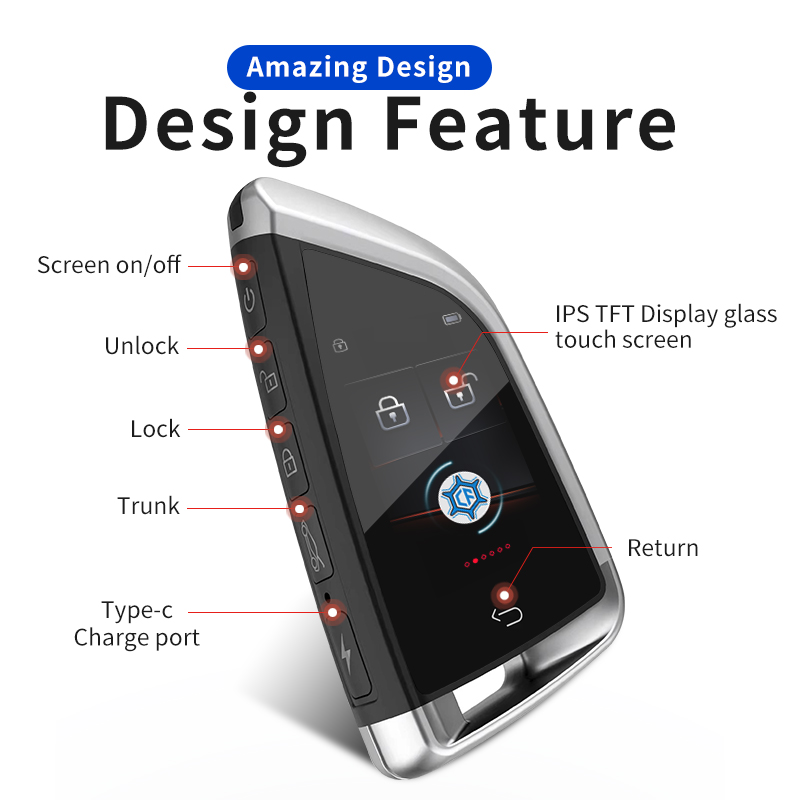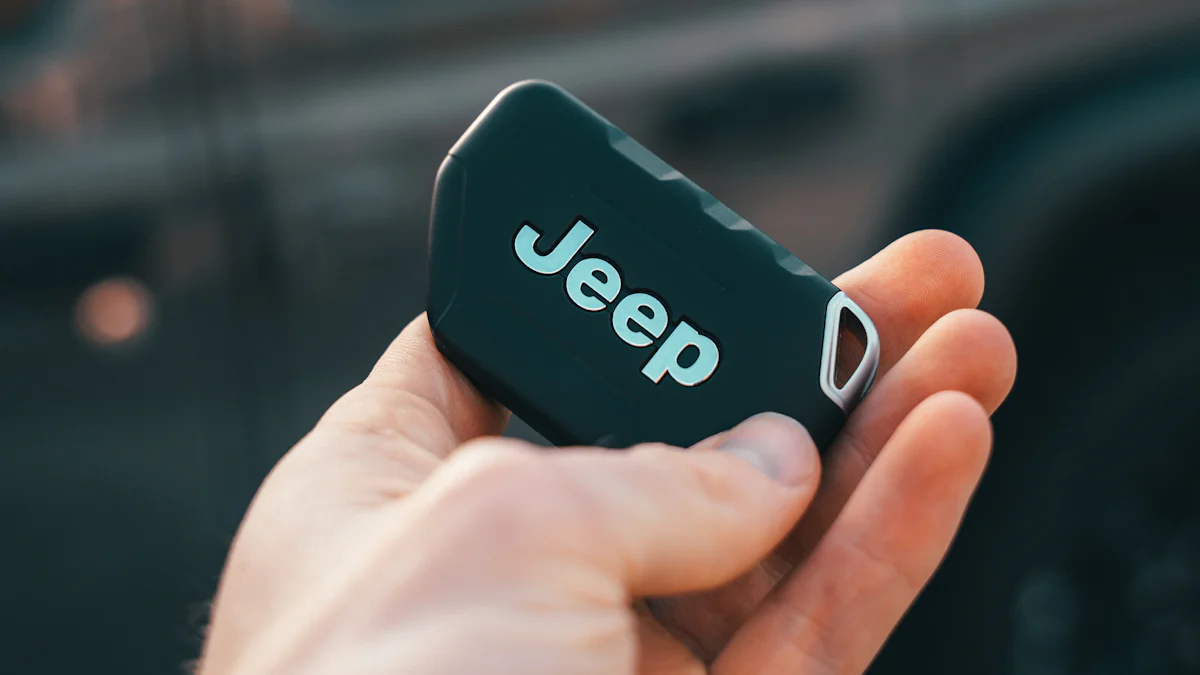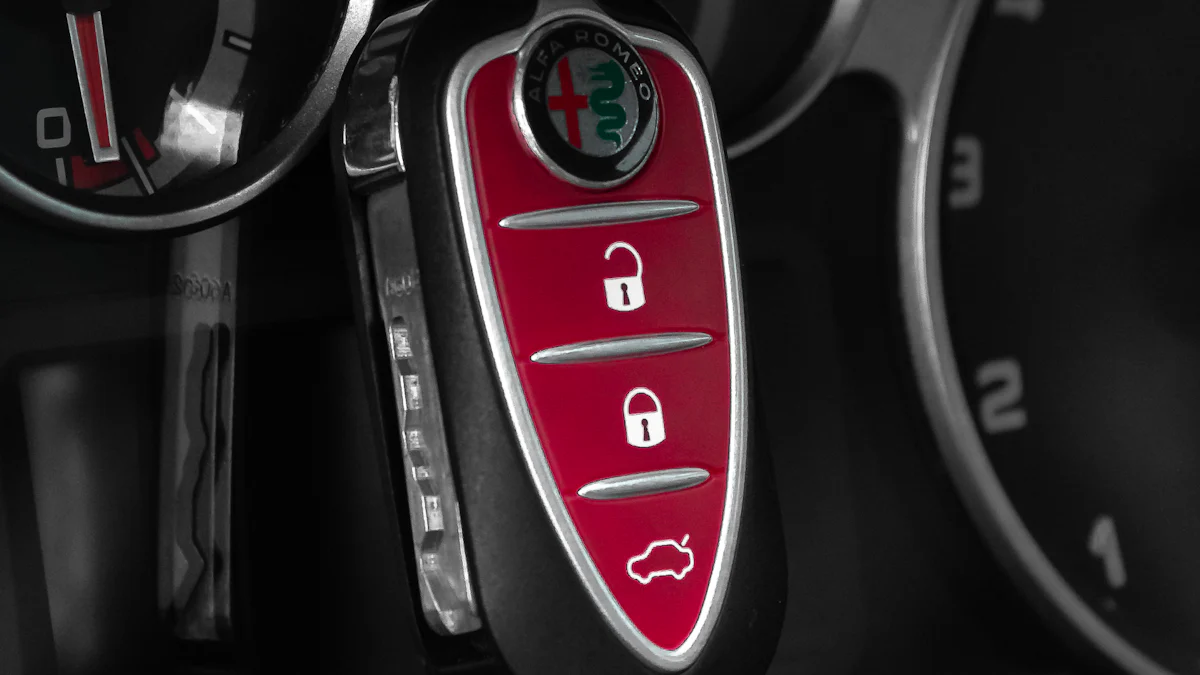Discover the Features of Smart Keys

Smart keys represent a significant advancement in modern technology. These innovative devices provide enhanced security and convenience for users. The evolution of keys has transformed from simple mechanical locks to sophisticated electronic systems. Historical developments in key technology have paved the way for features like biometric authentication and remote access. The integration of smart keys into vehicles and homes reflects the growing consumer demand for connected and secure environments. The introduction of the LCD smart car key exemplifies this trend, offering a blend of utility and cutting-edge technology.
What are Smart Keys?
Definition and Basic Concept
Smart keys represent a leap forward in key technology. These keys use electronic systems to provide enhanced security and convenience. Smart keys communicate with locks through encrypted signals. This communication allows for keyless entry and remote access.
How Smart Keys Differ from Traditional Keys
Traditional keys require physical contact to unlock doors. Smart keys, however, use radio-frequency identification (RFID) and near-field communication (NFC). These technologies enable users to unlock doors without inserting a key. Smart keys also offer features like remote start and proximity lock.
Key Components of Smart Keys
Smart keys consist of several key components:
RFID Chip: Communicates with the vehicle or lock.
Battery: Powers the electronic components.
Encryption Module: Ensures secure communication.
Buttons: Allow for remote functions like locking and unlocking.
Evolution of Smart Keys
Smart keys have evolved significantly over time. Early innovations laid the groundwork for modern developments.
Early Innovations
Early smart keys introduced basic electronic features. These keys used simple RFID technology. The primary function was keyless entry. Early smart keys provided a glimpse into the future of key technology.
Modern Developments
Modern smart keys offer advanced features. These include smartphone connectivity and biometric authentication. Keydroid's smart key exemplifies these advancements. It includes a UI HD full touch display and remote monitoring capabilities. Modern smart keys integrate seamlessly with smart home systems and vehicles. The Smart Key System uses encrypted signals to prevent illegal access. This system enhances both security and convenience.
Key Features of Smart Keys

Security Features
Encryption and Authentication
Smart keys use advanced encryption to secure communication between the key and the lock. This technology ensures that only authorized users can access the vehicle or home. The encryption module within smart keys generates unique codes for each interaction. This method prevents unauthorized access and enhances overall security.
Anti-theft Mechanisms
Smart keys incorporate anti-theft mechanisms to protect against common break-in methods. These features include immobilizers that disable the engine if an incorrect key is used. Some smart keys also have motion sensors that trigger alarms when tampered with. These mechanisms provide an extra layer of security for users.
Convenience Features
Keyless Entry
Keyless entry allows users to unlock doors without inserting a physical key. Smart keys communicate with the lock through radio-frequency identification (RFID) or near-field communication (NFC). Users can unlock their vehicles or homes by simply approaching the door. This feature offers unparalleled convenience and ease of use.
Remote Start
Remote start enables users to start their vehicles from a distance. Smart keys send an encrypted signal to the vehicle's ignition system. This feature allows drivers to warm up their cars during winter or cool them down in summer. Remote start enhances user comfort and convenience.
Integration with Other Technologies
Smartphone Connectivity
Smart keys can connect to smartphones, providing additional functionality. Users can lock or unlock doors and start their vehicles using mobile apps. Smartphone connectivity also allows for remote monitoring and control. This integration makes smart keys versatile and user-friendly.
Integration with Smart Home Systems
Smart keys integrate seamlessly with smart home systems. Users can control various home devices, such as lights and thermostats, using their smart keys. This integration provides a cohesive and connected living environment. Smart home systems enhance the overall utility of smart keys.
Types of Smart Keys
Automotive Smart Keys
Passive Keyless Entry (PKE)
Passive Keyless Entry (PKE) systems allow drivers to unlock and start their vehicles without physically using a car key. The system detects the presence of the smart key fob within a certain range. Once detected, the vehicle automatically unlocks the doors. PKE systems use radio-frequency identification (RFID) to communicate with the car. This technology enhances convenience and security for drivers.
Remote Keyless Entry (RKE)
Remote Keyless Entry (RKE) systems enable drivers to lock and unlock their vehicles from a distance. The smart key fob sends an encrypted signal to the car's receiver. This signal triggers the locking or unlocking mechanism. RKE systems often include additional features like remote start. This feature allows drivers to start the engine from a distance, providing comfort in extreme weather conditions.
Smart Keys for Homes
Smart Door Locks
Smart door locks offer advanced security and convenience for homeowners. These locks can be managed remotely through smartphone apps. Users can lock or unlock doors from anywhere. Smart door locks may also include features like fingerprint readers or keypads. These features enhance security by allowing only authorized individuals to enter the home.
Biometric Smart Keys
Biometric smart keys use unique physical characteristics for authentication. Common biometric features include fingerprint and facial recognition. These smart keys provide a high level of security. Unauthorized access becomes extremely difficult. Biometric smart keys are often used in high-security environments. These keys ensure that only verified users can gain entry.
Commercial and Industrial Smart Keys
Access Control Systems
Access control systems manage entry to commercial and industrial facilities. These systems use smart keys to grant or restrict access. Each smart key is programmed with specific permissions. Only authorized personnel can access restricted areas. Access control systems enhance security and streamline facility management.
Smart Key Management Systems
Smart key management systems organize and track the use of smart keys. These systems store keys in secure cabinets. Each key has a unique identifier. Users must authenticate themselves to retrieve a key. The system logs each transaction, providing a record of key usage. Smart key management systems improve accountability and reduce the risk of lost or stolen keys.
How Smart Keys Work
Technology Behind Smart Keys
Radio Frequency Identification (RFID)
Radio Frequency Identification (RFID) forms the backbone of many smart key systems. RFID technology uses electromagnetic fields to identify and track tags attached to objects. Each smart key contains an RFID chip that communicates with the vehicle or lock. The chip sends a unique, encrypted signal to the receiver. This process ensures that only authorized keys can unlock or start the vehicle.
Near Field Communication (NFC)
Near Field Communication (NFC) is another crucial technology in smart keys. NFC allows devices to communicate when they are close to each other. Smart keys use NFC to enable keyless entry and other functions. The NFC chip in the smart key interacts with the lock or vehicle system. This interaction provides a secure and efficient way to manage access.
Communication Protocols
Bluetooth Low Energy (BLE)
Bluetooth Low Energy (BLE) enhances the functionality of smart keys. BLE allows smart keys to connect with smartphones and other devices. This connection enables users to control locks and vehicles remotely. BLE consumes less power than traditional Bluetooth, making it ideal for smart keys. The low energy consumption extends the battery life of the smart key.
Wi-Fi Connectivity
Wi-Fi connectivity offers additional capabilities for smart keys. Smart keys with Wi-Fi can connect to home networks. This connection allows for remote monitoring and control through mobile apps. Users can receive notifications and updates about their locks or vehicles. Wi-Fi connectivity enhances the versatility and convenience of smart keys.
Power and Battery Management
Battery Life Considerations
Battery life is a critical factor in the design of smart keys. Manufacturers aim to maximize battery longevity without compromising functionality. Smart keys often use lithium-ion batteries due to their high energy density. Regular usage patterns and environmental factors can affect battery life. Users should monitor battery levels and replace batteries as needed to ensure optimal performance.
Energy Harvesting Technologies
Energy harvesting technologies provide innovative solutions for powering smart keys. These technologies capture energy from external sources like light or motion. Solar panels and kinetic energy converters are common examples. Energy harvesting reduces the reliance on traditional batteries. This approach enhances the sustainability and efficiency of smart keys.
Smart keys represent a blend of advanced technologies and practical features. Understanding how these keys work can help users appreciate their benefits. The combination of RFID, NFC, BLE, and Wi-Fi creates a robust and versatile system. Effective power management ensures that smart keys remain reliable and convenient.
Benefits of Using Smart Keys

Enhanced Security
Reduced Risk of Theft
Smart keys significantly reduce the risk of theft. Advanced encryption technology ensures that only authorized users can access vehicles or homes. The unique codes generated for each interaction prevent unauthorized access. This security measure makes it difficult for thieves to duplicate smart keys.
Secure Access Control
Secure access control is a key benefit of smart keys. Users can manage who enters their property through mobile apps or biometric features. This control enhances security by restricting access to authorized individuals only. Smart keys also log entry and exit times, providing a record of all activities.
Increased Convenience
Ease of Use
Smart keys offer unparalleled ease of use. Users can unlock doors or start vehicles without inserting a physical key. Technologies like RFID and NFC enable seamless interactions. This feature simplifies daily routines and reduces the hassle of carrying multiple keys.
Time-Saving Features
Time-saving features make smart keys highly valuable. Remote start allows users to prepare their vehicles before entering. Keyless entry speeds up the process of accessing homes or cars. These features save time and improve overall efficiency in daily activities.
Integration and Automation
Seamless Integration with Other Devices
Smart keys integrate seamlessly with other devices. Users can connect smart keys to smartphones, smart home systems, and other electronic devices. This integration allows for centralized control of various functions. For example, users can lock doors, adjust thermostats, and monitor security cameras from a single app.
Automation Capabilities
Automation capabilities enhance the functionality of smart keys. Users can set up automated routines for locking and unlocking doors. For instance, doors can automatically lock when users leave home and unlock upon return. This automation improves convenience and ensures that security measures are always in place.
Future Trends in Smart Key Technology
Advancements in Security
Quantum Encryption
Quantum encryption represents a significant leap in security for smart keys. This technology uses quantum mechanics to create unbreakable encryption codes. Quantum encryption ensures that only authorized users can access secure areas. This advancement will make smart keys even more secure than current systems.
Biometric Enhancements
Biometric enhancements continue to improve the security of smart keys. Fingerprint and facial recognition technologies are becoming more advanced. These features ensure that only verified individuals can gain access. Biometric enhancements provide an additional layer of security, making unauthorized access extremely difficult.
Emerging Applications
Smart Cities
Smart cities are integrating smart key technology to enhance urban living. These cities use smart keys for various applications, including public transportation and building access. Smart keys streamline these processes, making city life more convenient and secure. The integration of smart keys in smart cities showcases their versatility and potential.
Internet of Things (IoT) Integration
The Internet of Things (IoT) is revolutionizing how devices interact. Smart keys are becoming an integral part of this ecosystem. IoT integration allows smart keys to communicate with other smart devices. This communication enables seamless control over various functions, such as lighting and security systems. The integration of smart keys with IoT enhances the overall user experience.
Sustainability and Eco-Friendly Innovations
Energy-Efficient Designs
Energy-efficient designs are becoming a priority in smart key technology. Manufacturers are developing smart keys that consume less power. These designs extend battery life and reduce the need for frequent replacements. Energy-efficient smart keys contribute to a more sustainable future.
Recyclable Materials
Recyclable materials are being used to produce smart keys. This approach reduces environmental impact and promotes sustainability. Manufacturers are focusing on using eco-friendly materials without compromising functionality. Recyclable smart keys represent a commitment to environmental responsibility.
Smart key technology continues to evolve, offering enhanced security, convenience, and sustainability. Advancements in quantum encryption and biometric features ensure robust security. Emerging applications in smart cities and IoT integration showcase the versatility of smart keys. Sustainable designs and recyclable materials highlight the industry's commitment to eco-friendly innovations.
Smart keys play a crucial role in modern technology. These devices offer enhanced security and convenience. Features like keyless entry, remote start, and smartphone connectivity improve daily life. The Hyundai Smart Key System exemplifies how advanced technology can enhance user experience.
Future trends in smart key technology promise even greater advancements. Quantum encryption and biometric enhancements will provide robust security. Integration with smart cities and IoT will showcase the versatility of smart keys. Energy-efficient designs and recyclable materials highlight a commitment to sustainability.
Adopting smart key solutions can significantly improve security and convenience. Embracing this technology ensures a safer and more efficient lifestyle.
See Also
Key Features of iSun's LCD Smart Car Key
Exploring Features of LCD Smart Car Key Transponder
Switching to Smart Car Key: Battery Replacement Guide
iSun Digitech Limited
Contact : Coco Huang
E-mail: sales@iasun.cn

